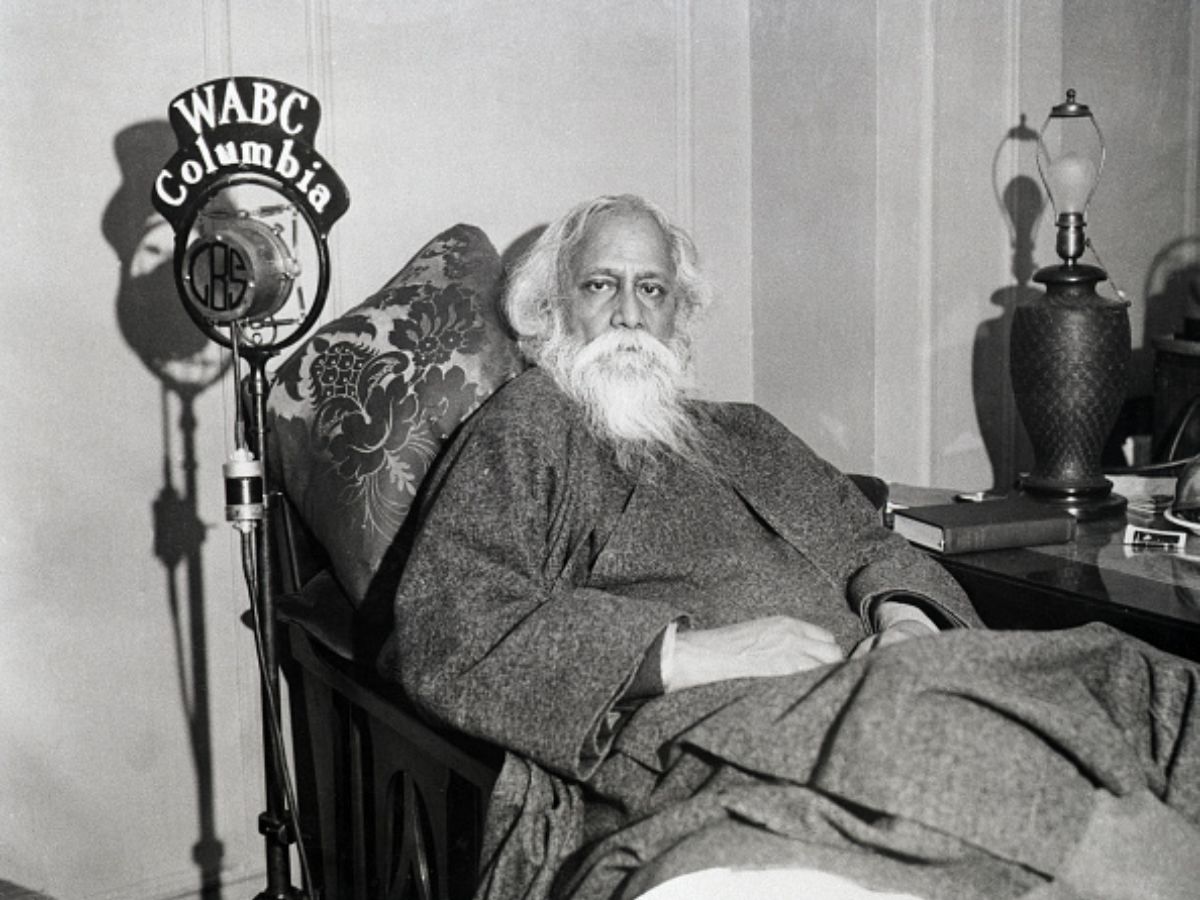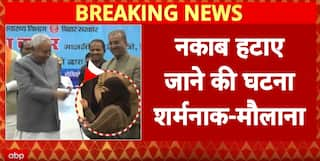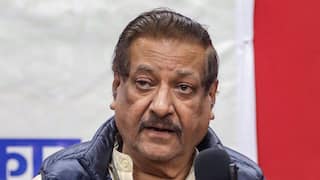Rabindranath Tagore, CV Raman, Har Gobind Khorana — Indian Nobel Laureates And Their Achievements
A total of 12 Indians have been conferred the Nobel Prize so far. From Rabindranath Tagore to Mother Teresa, & from CV Raman to Abhijit Banerjee, Indians have made the country proud with their feats.

India at 75: Indians have received the prestigious Nobel Prize for their contributions in the areas of Physics, Chemistry, Physiology or Medicine, Literature, and Peace. A total of 12 Indians have been conferred the Nobel Prize so far. As many as five Indian citizens, three overseas citizens of Indian origin, and three persons of foreign origin with Indian residency have received the Nobel Prize.
From Rabindranath Tagore to Mother Teresa, and from CV Raman to Abhijit Banerjee, Indians have made the country proud through their unparalleled contributions to society. Ronald Ross, Rudyard Kipling, and the 14th Dalai Lama were the persons of foreign origin with Indian residency who received the Nobel Prize.
Here is the list of Indian Nobel laureates and their achievements which led them to winning the prestigious award.
Rabindranath Tagore
Rabindranath Tagore was the first Indian and the first Asian to be awarded the Nobel Prize.
Tagore received the 1913 Nobel Prize in Literature "because of his profoundly sensitive, fresh and beautiful verse, by which, with consummate skill, he has made his poetic thought, expressed in his own English words, a part of the literature of the West".
Tagore was born in Calcutta, and began to write verse at an early age. He completed his studies in England in the late 1870s, following which he returned to India.
Tagore started publishing several books of poetry in the 1880s. He founded an experimental school in Shantiniketan in 1901. His purpose of establishing the school was to blend the best of Indian and Western traditions. He read his poetry in Europe, the Americas, and East Asia.
Tagore also became a spokesperson for Indian independence from British colonial rule.
According to the Nobel Prize Organisation, Tagore's writing is deeply rooted in both Indian and Western learning traditions, and includes the portrayals of common people's lives, literary criticism, social issues, and philosophy, and fiction in the form of poetry, stories, songs and dramas.
Initially, Tagore wrote in Bengali, but recast his poetry in English, as a result of which he reached a broader audience in the West. Through his poetry, Tagore intended to convey the peace of the soul in harmony with nature.
ALSO READ | Nobel Prize 2021 In Literature: Who Is Abdulrazak Gurnah? The Refugee From Zanzibar
CV Raman

Indian physicist Chandrasekhara Venkata Raman was awarded the 1930 Nobel Prize in Physics for his work on the scattering of light and for the discovery of the Raman Effect.
Sir CV Raman announced the discovery of the Raman Effect on February 28, 1928. He was awarded the 1930 Nobel Prize in Physics "for his work on the scattering of light and for the discovery of the effect named after him".
The Raman Effect is a phenomenon in spectroscopy (study of the absorption and emission of light and other radiation by matter, and the dependence of these processes on the wavelength of the radiation) discovered by CV Raman while working in the laboratory of the Indian Association for the Cultivation of Science, Kolkata.
Raman Effect is the change in the wavelength of light that occurs when a light beam is deflected by molecules. When a beam of light traverses a dust-free, transparent sample of a chemical compound, a small fraction of the light emerges in all directions other than that of the incident beam. The wavelength of most parts of the scattered light remains unchanged.
However, a small part has wavelengths different from that of the incident light. This phenomenon occurs due to the Raman Effect.
Raman was born at Tiruchirapalli in Southern India on November 7, 1888. His father was a lecturer in mathematics and physics, as a result of which Raman was immersed in an academic atmosphere from the start.
In 1902, Raman entered Presidency College, Madras, and in 1904, passed his BA examination, winning first place and a gold medal in physics, according to the Nobel Prize organisation.
He obtained his MA degree in 1907, with the highest distinctions.
The two fields of investigation to which Raman dedicated his entire career were optics and acoustics. He carried out his earliest research in optics and acoustics while he was a student.
In 1922, Raman published his work on the "Molecular Diffraction of Light". This was the first of a series of investigations with his collaborators which ultimately led to discovery of the radiation effect which bears his name, the Raman Effect. Raman discovered the radiation effect on February 28, 1928.
His work on Raman Effect was published in the Indian Journal of Physics in 1928. Raman was awarded the 1930 Nobel Prize in Physics for the discovery of the Raman Effect.
In 1924, Raman was elected a Fellow of the Royal Society of London. He has also been honoured with a large number of honorary doctorates.
In 1929, Raman was knighted. He became a member of the Pontifical Academy of Sciences, Vatican City, in 1961.
In 1948, Raman founded the Raman Research Institute in Bangalore. It began as an institute privately owned by Raman, and is now funded by the government of India.
Other investigations conducted by Raman included experimental and theoretical studies on the diffraction of light by acoustic waves of ultrasonic and hypersonic frequencies, and those on the effects produced by X-rays on infrared vibrations in crystals exposed to ordinary light.
Raman had studied the spectroscopic behaviour of crystals. In 1948, he approached the fundamental problems of crystal dynamics in a new manner.
Raman was the uncle of Subrahmanyan Chandrashekhar, who was awarded the 1983 Nobel Prize in Physics, with William Fowler.
Mother Teresa
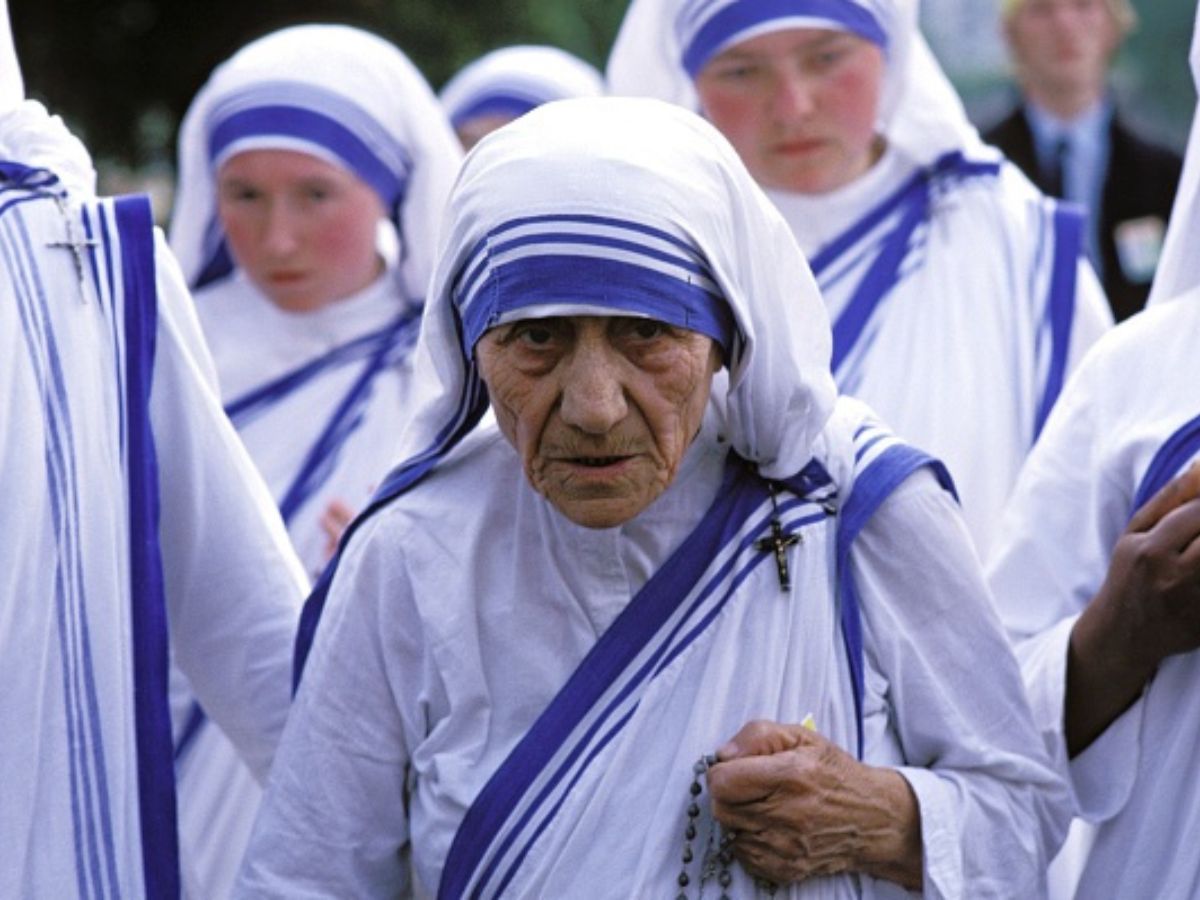
Mother Teresa was awarded the 1979 Nobel Peace Prize "for her work for bringing help to suffering humanity".
She was born Agnes Gonxha Bojaxhiu on August 26, 1910, in Uskup, Ottoman Empire, which is present-day Skopje, North Macedonia.
According to the Nobel Prize Organisation, a twelve-year-old Agnes heard a call in which the Almighty demanded that she devote her life to Him. Agnes entered a nunnery, received an education, and was sent to Calcutta in India to be a teacher, after which her new name was Teresa.
She received a second call from God after coming to India. The call was to help the poor while living among them.
Mother Teresa left her teaching post at a Roman Catholic girls' school in Calculate in order to devote her life to working among the poorest of the poor in the slums of the city.
Mother Teresa founded a new sisterhood, Missionaries of Charity, as part of which she and her helpers built homes for orphans, nursing homes for lepers, and hospices for the terminally ill in Calcutta. The Missionaries of Charity organisation was also engaged in aid work in other parts of the world.
For several years, Mother Teresa helped children and refugees.
The Norwegian Nobel Committee, which awarded the 1979 Nobel Peace Prize to Mother Teresa, expressed its recognition of her work in bringing help to suffering humanity.
The Nobel Prize Organisation describes Mother Teresa as a "Saint in the Gutter" and "Saint in Heaven".
Pope Francis declared Mother Teresa a saint in 2016.
ALSO READ: Tessy Thomas, Gagandeep Kang, Soumya Swaminathan — Saluting The Indian Women In Science
Amartya Sen
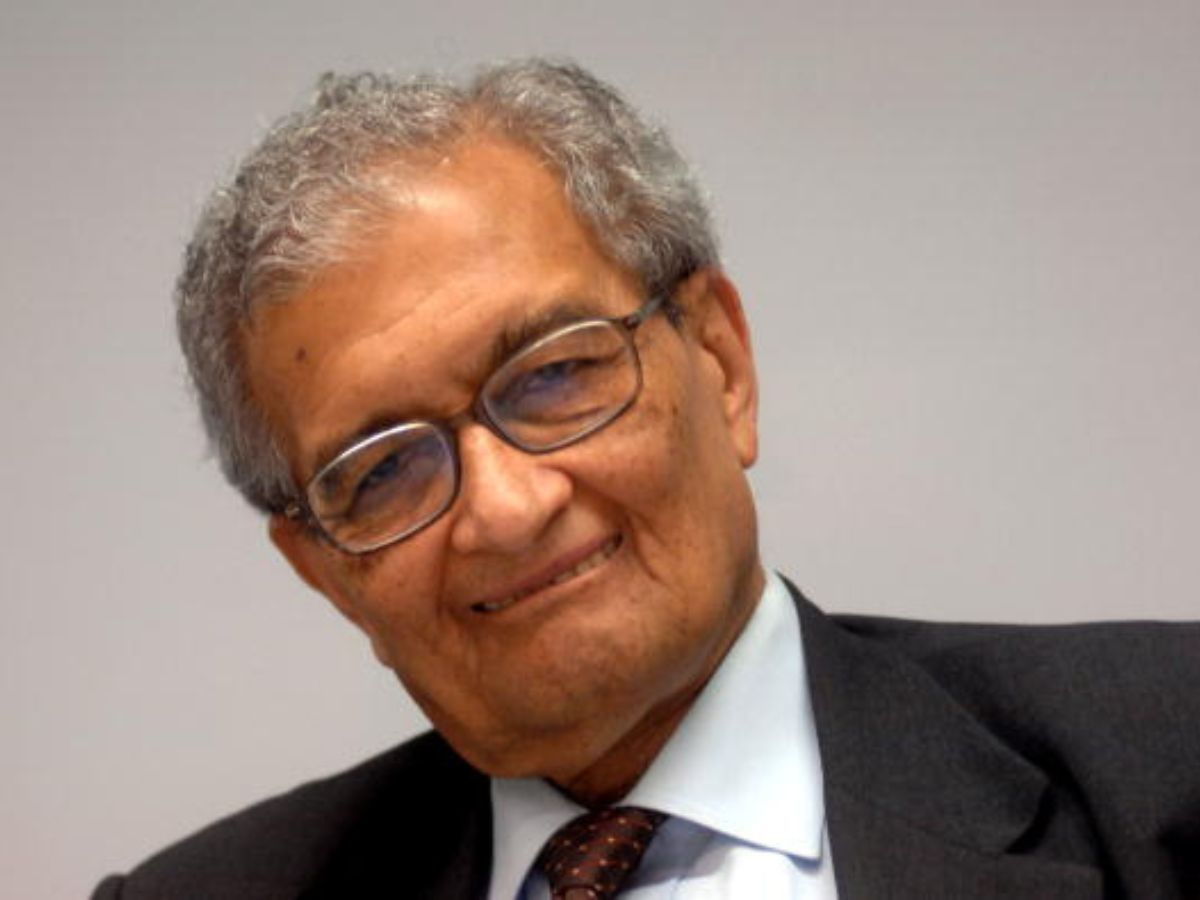
Indian economist Amartya Sen was awarded the Sveriges Riksbank Prize in Economic Sciences in Memory of Alfred Nobel in 1998.
Sen was conferred the 1998 Nobel Prize in Economic Sciences "for his contributions to welfare economics".
Born into a Baidya family in Santiniketan, Bengal, India, Sen completed his university studies in Kolkata, India, and at Cambridge, United Kingdom. In 1959, Sen received his PhD at Cambridge.
According to the Nobel Prize Organisation, Sen has held professorships in India and at Oxford and Cambridge universities, and in the United States, including at Harvard University.
Sen's research was focused on how individuals' values can be considered in collective decision-making and how welfare and poverty can be measured. His interest in questions of distribution, and the lot of society's poorest members led him to work towards finding which are the most important and fundamental resources in a community and how they should be divided.
Sen also included famines in his studies to create a deeper understanding of the economic reasons behind famine and poverty.
ALSO READ | Nobel Prize 2021 In Economics EXPLAINED: Natural Experiments And The Crucial Questions They Can Answer
Kailash Satyarthi

Children's rights activist Kailash Satyarthi is a recipient of the Nobel Peace Prize. The Norwegian Nobel Committee awarded the 2014 Nobel Peace Prize jointly to Kailash Satyarthi and Malala Yousafzai "for their struggle against the suppression of children and young people and for the right of all children to education".
Satyarthi was awarded the Nobel Peace Prize for "focusing attention on the grave exploitation of children for financial gain". According to the Nobel Prize Organisation, he followed the non-violent tradition of Indian independence leader Mahatma Gandhi, and fought child labour and slavery.
Born to a high-caste family, he completed a degree in electrical engineering, but gave up his career and his high-caste name, Sharma, and instead called himself Satyarthi, which means "seeker of truth".
Satyarthi led a global march against child labour in 1998, a protest which helped encourage the United Nations' International Labour Organisation (ILO) to adopt a convention protecting children against exploitation and hazardous work.
He founded the Save the Child Movement (BBA) and the GoodWeave organisation, a network of non-profit organisations dedicated to ending child labour in the rug industry. GoodWeave organisation certifies carpet manufacturers who do not use child labour in their production.
Satyarthi and his colleagues had freed 83,000 children from slavery, as of 2014.
Nobel Laureates Of Indian Origin
Har Gobind Khorana, Subramanyan Chandrasekhar, Venki Ramakrishnan, and Abhijit Banerjee are the Nobel laureates of Indian origin who were born in India but subsequently not citizens of the country.
Har Gobind Khorana

Har Gobind Khorana was an Indian-American biochemist known for his research on the human genetic code and its function in protein synthesis.
Khorana was awarded the 1968 Nobel Prize in Physiology or Medicine along with Robert W. Holley and Marshall W. Nirenberg "for their interpretation of the genetic code and its function in protein synthesis," the Nobel Prize Organisation said on its website. Their research helped show how the nucleotides in nucleic acids, which carry the genetic code of the cell, control the cell's synthesis of proteins.
Though it was established in the 1950s that genetic information is transferred from DNA to RNA to protein and that one sequence of three nucleotides in DNA corresponds to a certain amino acid within a protein, it was not how this genetic code could be cracked.
Marshall Nirenberg had discovered the first piece of the puzzle, and in the years that followed, the remainder of the code was generally revealed. Khorana made important contributions to the field by building different RNA chains with the help of enzymes. He was able to produce proteins using these enzymes. The rest of the puzzle could be solved with the help of the amino acid sequences of these proteins.
Khorana, in the 1960s, confirmed Nirenberg's findings that the way the four different types of nucleotides are arranged on the spiral "staircase" of the DNA molecule determines the chemical composition and function of a new cell, according to Britannica.
In order to produce the desired amino acid, a particular combination of nucleotides is read off along a strand of DNA. There are 64 possible combinations of nucleotides that serve as instructions for the production of amino acids, or the building blocks of proteins.
Details about which serial combinations of nucleotides form which specific amino acids were added by Khorana.
An important breakthrough was that Khorana proved that the nucleotide code is always transmitted to the cell in groups of three, called codons. He also determined that some of the codons prompt the cell to start or stop the manufacture of proteins.
In 1970, Khorana made another contribution to genetics when he and his research team were able to synthesise the first artificial copy of a yeast gene.
In subsequent research, he explored the molecular mechanisms underlying the cell signalling pathways of vision in vertebrates. He focussed mainly on the structure and function of rhodopsin, a light-sensitive protein found in the retina of the vertebrate eye, and also investigated mutations in rhodopsin that are associated with retinitis pigmentosa, which causes night blindness.
He served as Professor of Biology at the Massachusetts Institute of Technology, from the fall of 1970 till his retirement in 2007.
He was also awarded the Albert Lasker Basic Medical Research Award in 1968, and the National Medal of Science in 1987.
Khorana, MIT's Alfred P. Sloan Professor of Biology and Chemistry emeritus, died of natural causes in Concord, Massachusetts, on November 9, 2011.
Subramanyan Chandrasekhar
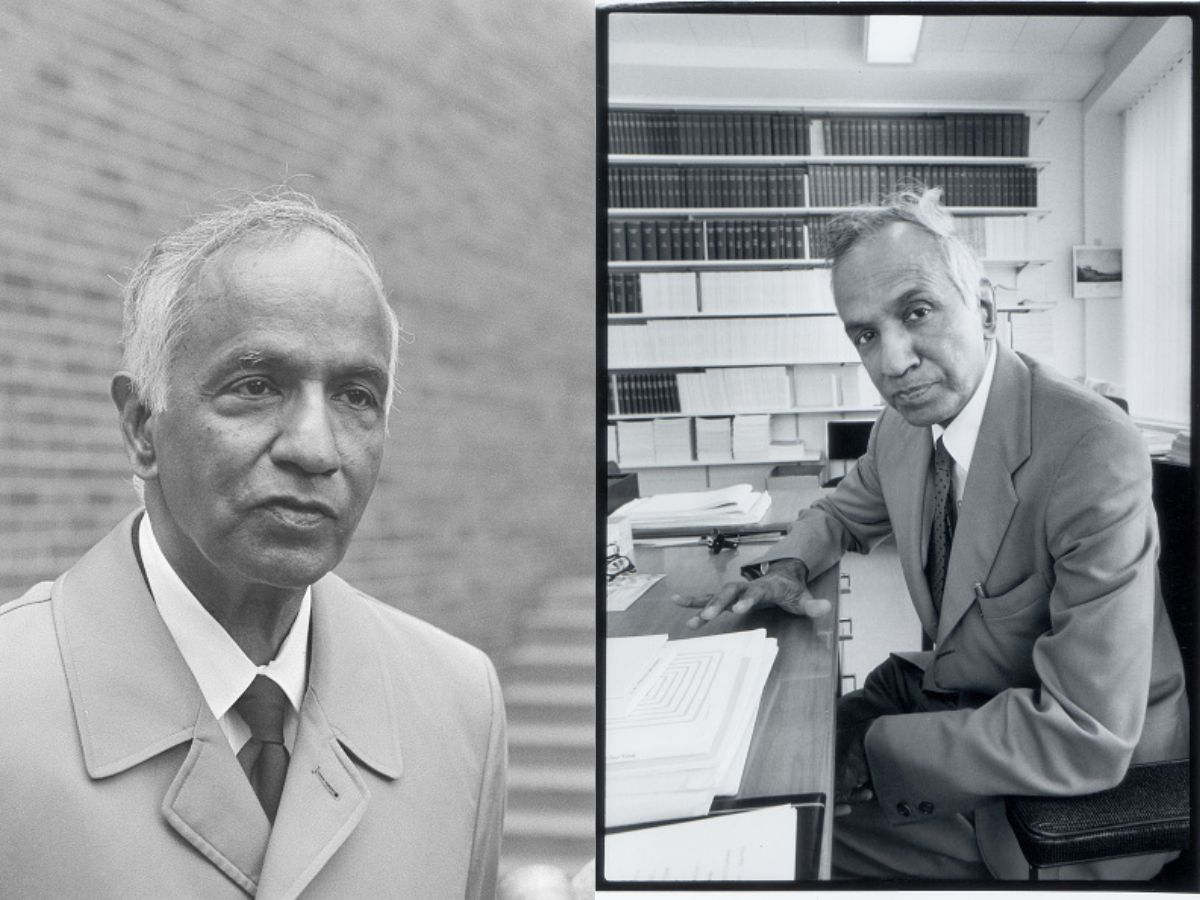
Subramanyan Chandrasekhar was an Indian astrophysicist who was awarded the 1983 Nobel Prize in Physics "for his theoretical studies of the physical processes of importance to the structure and evolution of the stars".
Chandrasekhar was born in Lahore, in October 1910, and received his early education at home. From 1922 to 1925, he attended the Hindu High School in Triplicane, and obtained his university education at the Presidency College.
In June 1930, he completed his bachelor's degree in physics. In the same year, he received a Government of India scholarship for graduate studies in Cambridge, England, where he came a research student under the supervision of Professor RH Fowler.
He obtained his PhD degree at Cambridge in the summer of 1933, and the following year, he was elected to a Prize Fellowship at Trinity College for the period 1933 to 1937.
Subramanyan formed lasting friendships with Sir Arthur Eddington and Professor EA Milne during his Fellowship years at Trinity. In January 1937, he joined the faculty of the University of Chicago.
Subramanyan studied stellar structure, stellar dynamics, stellar atmospheres, and black holes, among others.
Stars in the universe form from clouds of gas and dust, and when these clouds are pulled together by gravitational force, energy is released in the form of heat. Reactions among the atomic nuclei in the interior region of the star begin when a high enough temperature is reached. In the 1930s, Subramanyan Chandrasekhar started forming theories for the development that stars subsequently undergo, and showed that when the hydrogen fuel of stars of a certain size begins to run out, it collapses into a compact, brilliant star known as a white dwarf.
Venkatraman Ramakrishnan
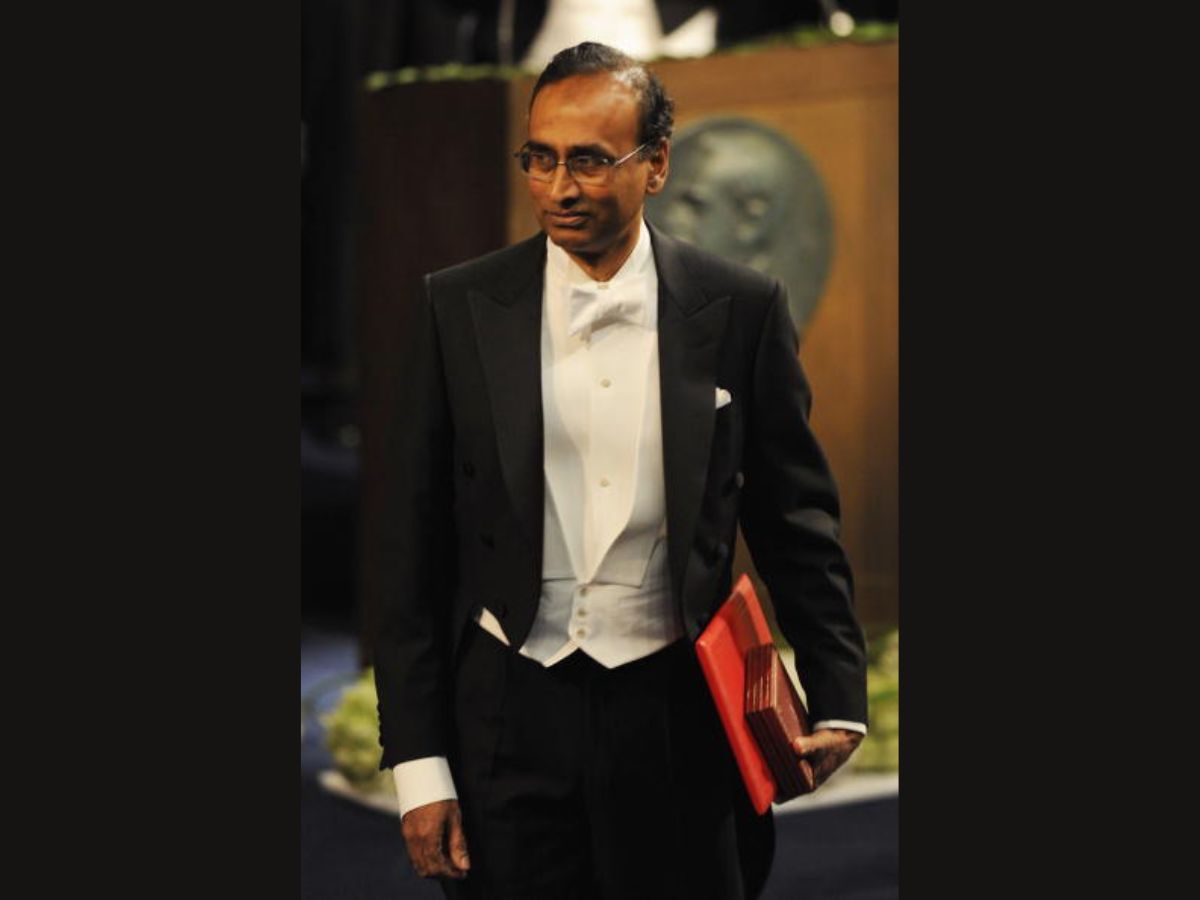
Venkatraman Ramakrishnan is a structural biologist and a recipient of the Nobel Prize in Chemistry.
He shared the 2009 Nobel Prize in Chemistry with Thomas A Steitz and Ada E Yonath "for studies of the structure and function of the ribosome.
Ramakrishnan was born in 1952 in Chidambaram, an ancient temple town in Tamil Nadu.
In 1976, he obtained his PhD degree in physics from Ohio University. Then, he spent two years studying biology as a graduate student at the University of California, San Diego, to make a transition from theoretical physics to biology.
The vital functions of an organism are managed by large, complex protein molecules produced in cells' ribosomes, where genetic information from messenger RNA is translated into chains of amino acids that then build proteins. In 2000, Ramakrishnan and other researchers used a method known as X-ray crystallography to map the structure of ribosomes, made up of thousands of atoms.
Ramakrishnan and his colleagues' work on the structure and function of the ribosome has played an important role in the production of antibiotics.
ALSO READ | Nobel Prize 2021: What Is Asymmetric Organocatalysis? Chemistry Nobel-Winning Feat EXPLAINED
Abhijit Banerjee
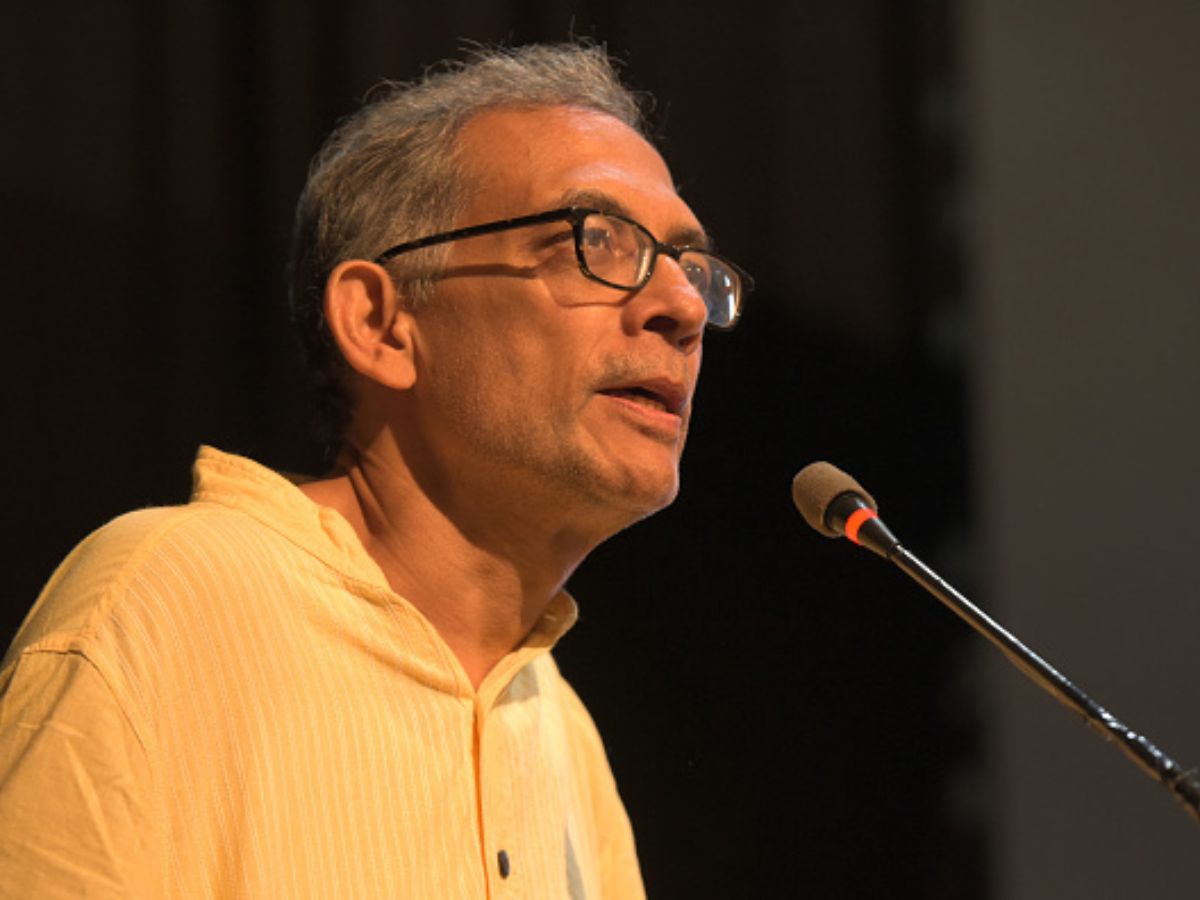
Indian economist Abhijit Banerjee shared the 2019 Sveriges Riksbank Prize in Economic Sciences in Memory of Alfred Nobel with Esther Duflo and Michael Kremer "for their experimental approach to alleviating global poverty".
Banerjee was born in Mumbai, India, and studied at the University of Calcutta and Jawaharlal Nehru University in Delhi. In 1998, he earned his doctorate at Harvard University in the US.
Before becoming a professor at the Massachusetts Institute of Technology, where he now works, Banerjee taught at Harvard University and Princeton University.
Esther Duflo, with whom Banerjee shared the 2019 Nobel Prize in Economic Sciences, is his fellow researcher and wife. They are the sixth married couple to jointly win a Nobel Prize.
The reduction of global poverty, in all its forms, is one of humanity's most urgent issues. Banerjee, Duflo, and Kremer have introduced a new approach to obtaining reliable answers about the best ways to fight global poverty, and which involves dividing this issue into smaller, more manageable, questions.
Banerjee and Duflo tried to measure the effectiveness of actions such as government programmes in improving people's lives by using randomised controlled trials. For instance, several mothers were not bringing their children for the polio vaccination drives despite the fact that polio vaccination is available for free in India. As part of a field experiment, Banerjee and Duflo provided a bag of pulses to mothers who vaccinated their children, and saw that the immunisation rate increased in the region.






